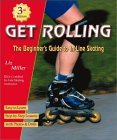Inline Skating: Safety
Inline skating safety precautions are often neglected. These precautions could avoid many unnecessary injuries. Beginners in particular should never skate without a complete set of protective gear (which includes a helmet). The lack of practice and poor braking techniques makes it absolutely essential for beginners to regard safety precautions.
In addition to this we recommend participation in an inline-skating introductory course which is offered almost everywhere. In the courses, braking and falling correctly is given precedence. The basic knowledge acquired in these courses decreases the risk of getting injuries considerably.
top 

Inline!: A Manual for Beginning to Intermediate Inline Skating
|
Which parts of the body are most at risk when inline skating?
Distribution of Inline Skating Injuries:
16 % |
head, neck |
32 % |
hand, forearm, elbows |
11 % |
torso, pelvis |
26 % |
knee, foot, lower leg |
Grazes happen very often when the protective gear is not worn. Serious injuries, such as fractures, usually occur in arms and hands. Most accidents happen when crossing the street.
top 

Get Rolling, the Beginner's Guide to In-line Skating, Third Edition
|

